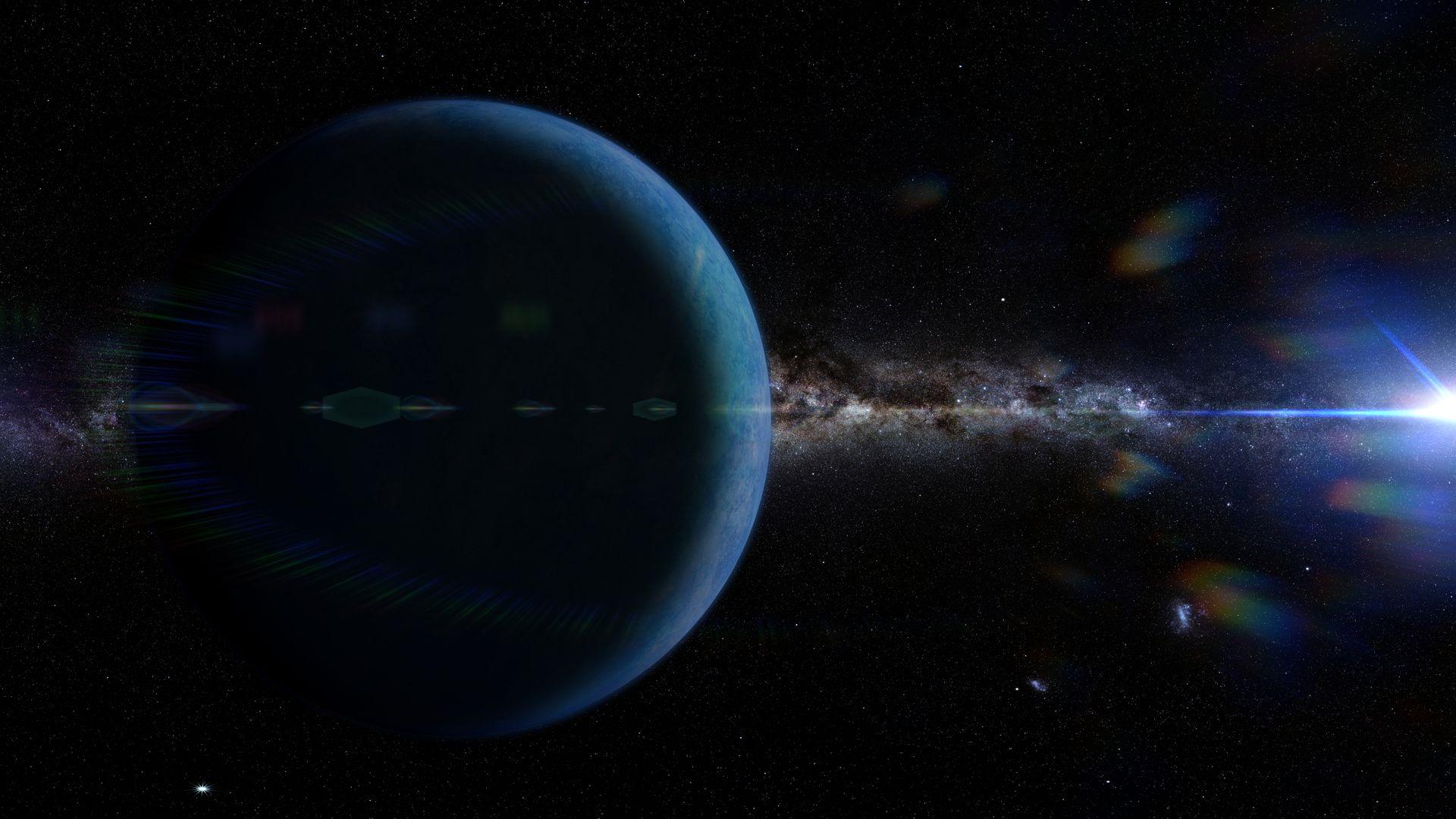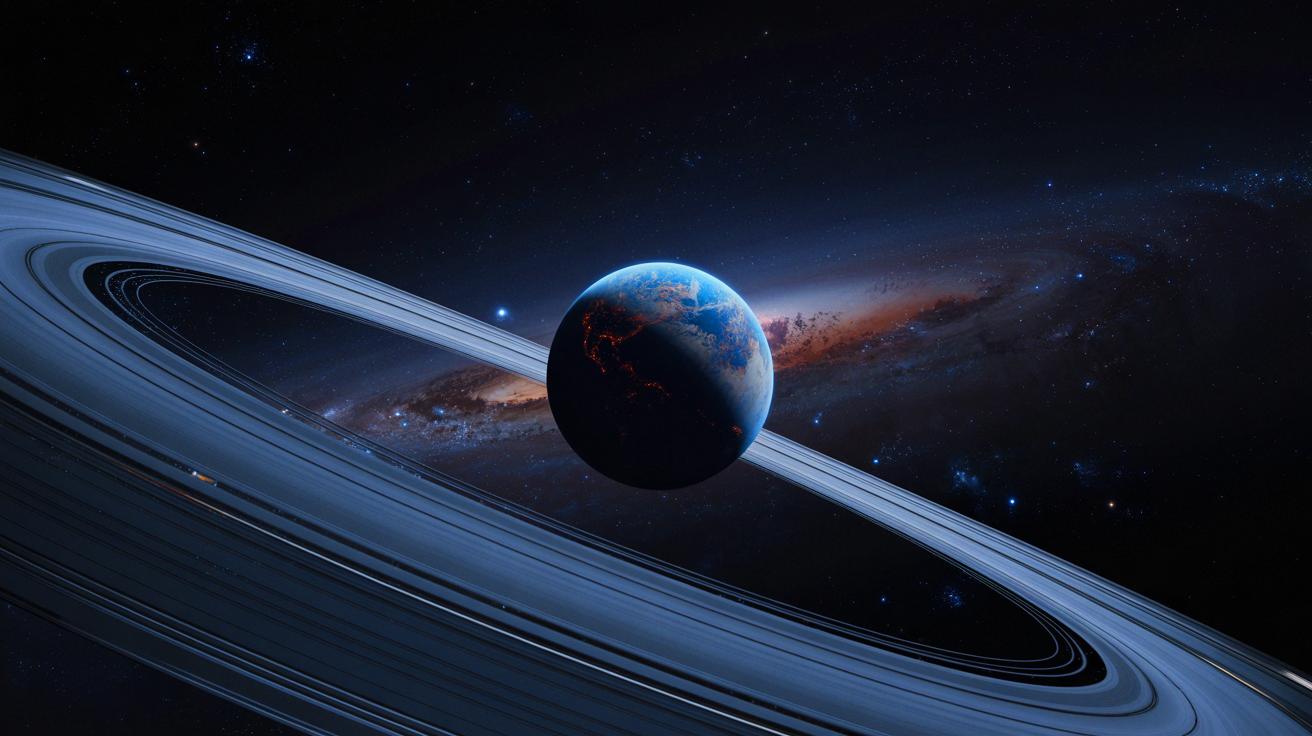| IN A NUTSHELL |
|
The quest for discovering the elusive Planet Nine has captivated astronomers and the public alike for years. Recent findings have rekindled this excitement, as astronomers claim they have identified a promising candidate for this mysterious celestial body. While this potential discovery is thrilling, skepticism remains. Is this the breakthrough we’ve been waiting for, or just another cosmic mirage?
The Search for Planet Nine: A Cosmic Puzzle
The theory of Planet Nine emerged to explain the unusual orbits of certain objects in the Kuiper Belt, a region beyond Neptune filled with icy bodies. The existence of a large, unseen planet could account for the gravitational forces affecting these orbits. However, proving this hypothesis has been an astronomical challenge. Despite numerous efforts, direct observational evidence remains elusive.
Recently, researchers delved into archival data from old satellite missions to hunt for Planet Nine. By analyzing infrared images from the 1983 Infrared Astronomical Satellite (IRAS) and the 2006-2011 AKARI satellite, they identified a peculiar dot moving across the sky. This dot, consistent with a distant planet’s movement, has sparked renewed hope in the scientific community.

“A.I. Cracks the Black Hole Code”: Astronomers Use Artificial Intelligence to Reveal Hidden Forces at the Heart of the Universe
Controversy and Skepticism: A Divided Community
The prospect of a ninth planet is undeniably exciting, but it is not without controversy. Renowned astronomer Mike Brown, who was instrumental in proposing the Planet Nine hypothesis, remains skeptical about the recent findings. Brown’s calculations suggest that the object’s orbit does not align with the predicted path of Planet Nine, casting doubt on its identity as the hypothesized planet.
Brown’s skepticism is rooted in the significant tilt of the object’s orbit, which deviates from the expected 15 to 20 degrees. This misalignment implies that the newfound object may not exert the gravitational influence necessary to explain the Kuiper Belt’s anomalies. Despite these discrepancies, the astronomical community remains cautiously optimistic, recognizing that further observations could provide clarity.
“Mars Lost Its Water Here”: NASA Captures Ancient Blast That May Explain How the Red Planet Turned Into a Dusty Wasteland
Analyzing the Data: From Dots to Planets
Transforming a mere dot in the sky into a recognized planet requires meticulous analysis. The team behind the recent study painstakingly sifted through satellite data, identifying potential candidates for Planet Nine. After eliminating known objects, they focused on a single dot that appeared in both the IRAS and AKARI datasets.
This candidate, characterized by consistent colors and brightness across images, suggests the presence of a singular object captured by both satellites. However, follow-up observations are crucial to determine the object’s full orbit and confirm its planetary status. The scientific method demands rigorous verification, and this potential discovery is no exception.
James Webb Telescope Unlocks the Deep Structural Secrets of Disk Galaxies, Revealing How the Universe Built Its Greatest Shapes
The Future of Planetary Discovery: New Horizons
The search for Planet Nine is set to enter a new era with the advent of the Vera C. Rubin Observatory in Chile. Equipped with the world’s largest digital camera, this state-of-the-art facility will peer deeper into space than ever before. Scheduled to open in 2025, the observatory may finally offer definitive evidence regarding Planet Nine’s existence.
Researchers anticipate that the observatory’s enhanced capabilities will either confirm the presence of Planet Nine or debunk the hypothesis altogether. This pivotal moment in astronomy could reshape our understanding of the solar system’s architecture, bringing us closer to unraveling the mysteries of the cosmos.
The quest for Planet Nine epitomizes the relentless human spirit to explore the unknown. As astronomers continue their search, the potential discovery of this enigmatic planet could revolutionize our understanding of the solar system. Will the Vera C. Rubin Observatory finally settle the debate, or will Planet Nine remain an elusive specter in the vast expanse of space? The answer may be just around the cosmic corner.
Our author used artificial intelligence to enhance this article.
Did you like it? 4.4/5 (27)
